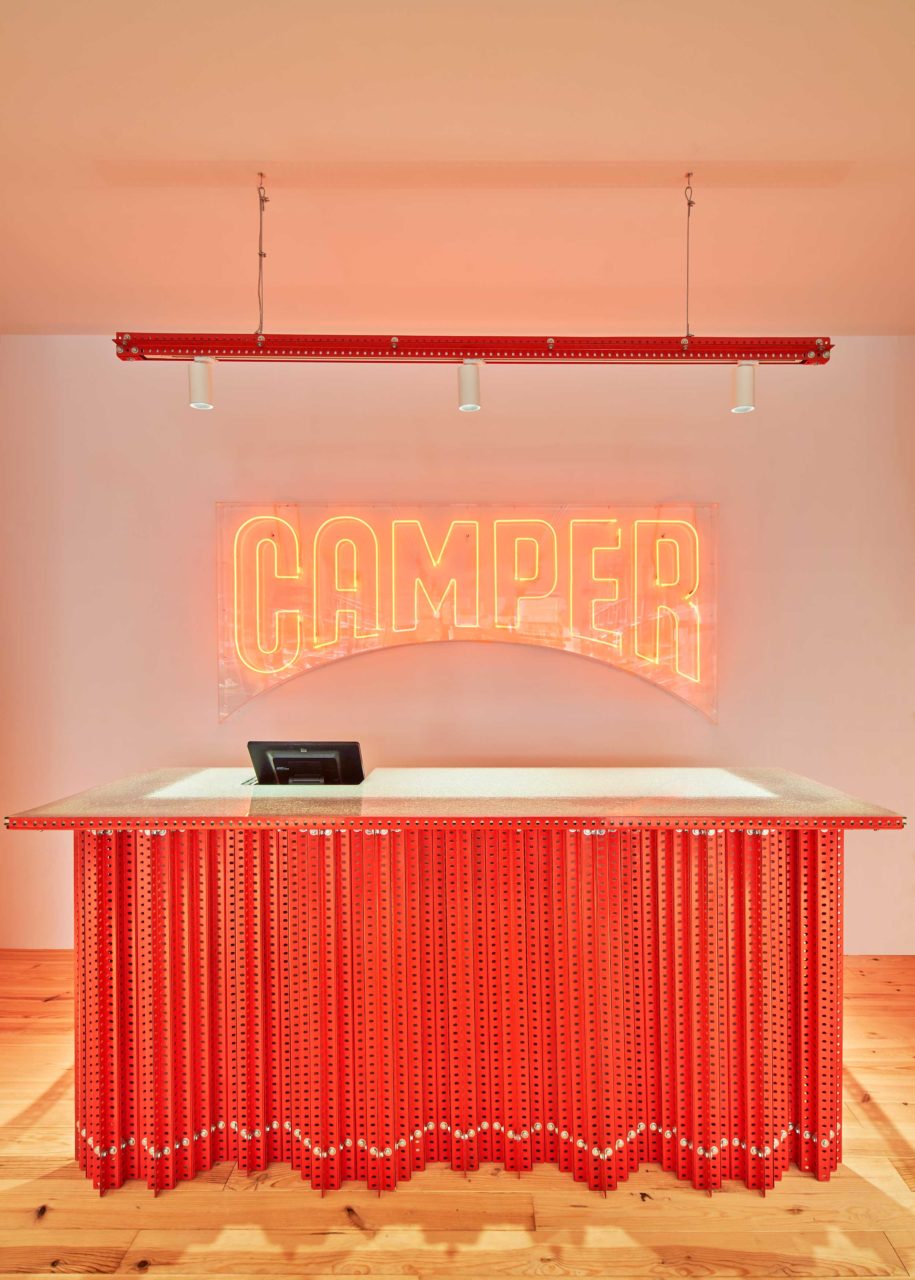Since debuting his upcycled leather composite Structural Skin furniture line in 2013, Spanish designer Jorge Penadés has made waves on the international design scene. Whether creating a chair by strapping in sheets of glass together or curating the speculative Extraperlo exhibit during each annual Madrid Design Week, the up-and-comer always finds smart ways to interpret complex concepts. His approach is both structurally inventive and deeply referential, especially when it comes to the physical and semiotic translation of industrial materials. Experimental talents don’t always manage to anchor their postulations with visual impact. Penadés’ intuitive understanding of color, form, and texture ensures that even his most convoluted projects can gain the attention of a broad audience.

For his first-ever interiors project, Penadés was commissioned by Spanish shoewear brand Camper to outfit their latest outpost in Málaga. The designer was given carte blanche and opted for a simple yet impactful concept that evokes a warehouse but also a number of children’s construction toys. He referenced the brand’s recently refurbished depot that contains an archive of novel items, such as design pieces by greats like Michele De Lucchi, Gaetano Pesce, Ingo Maurer, the Bouroullec brothers, and Konstantin Grcic.



By employing a straightforward modular system of perforated metal profiles, corner plates, and fasteners, Penadés developed a multichromatic matrix of shelving and display units but also ingeniously conceived seats and custom track light fixtures. The designer based his concept on the idea of a temporary factory and assembled the legolike components with the help of a small team during a few months. Bespoke typographical wayfinding elements, constructed using the same materials, were introduced to add a sense of refinement to the space.


